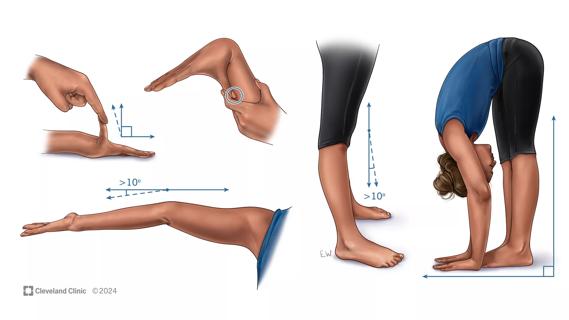National database study reveals insights into survival outcomes

Trisomy 13 (T13), also known as Patau syndrome, is a genetic abnormality often associated with severe neurocognitive issues and high infant mortality. Using a large national database, researchers found that despite a slight decrease in hospital admissions and significantly longer length of stay (LOS), mortality rates in the cohort remained largely unchanged. These findings, published in Maternal and Child Health Journal, add new evidence to the literature to support counseling and clinical decision-making.
Advertisement
Cleveland Clinic is a non-profit academic medical center. Advertising on our site helps support our mission. We do not endorse non-Cleveland Clinic products or services. Policy
Using data from the National Inpatient Sample of more than 66.2 million infants, 5,792 newborn infants, approximately 0.01%, were diagnosed with T13 from 2003 to 2018. Researchers also noted a slight decrease in the diagnosis of T13 over the years (p < 0.001).
Though T13 is considered rare, neonatologist Mohsen Farghaly, MD, says he and his colleagues encounter a new diagnosis about once a month in the neonatal intensive care unit (NICU) because of referral. A level IV NICU, Cleveland Clinic Main Campus, provides the most advanced care for complex, high-risk newborns. Patients are typically referred from other hospitals or from within the region to receive expert neonatology care and specialty pediatric services.
The interventions available to these patients have changed significantly in recent years, including advancements in the repair of cardiac defects.
“Two decades ago, the diagnosis was considered lethal. Based on new data in the early 2000s, hospital practices began to shift. Babies are now resuscitated, often admitted, and typically undergo different procedures and surgical interventions,” he explains. But the question remains: Are these babies faring better than those from earlier treatment eras?
Eager to get a clearer picture of hospital-based care and survival outcomes, Dr. Farghaly and other Cleveland Clinic Children’s colleagues set out to examine survival, adverse events, surgical procedures, tracheostomy and G-tube placement, and LOS.
The neonatal mortality rate in the national sample was 58%, a number that has remained largely unchanged for nearly two decades (p < 0.001). The highest mortality rates were associated with complications such as pulmonary hemorrhage (91%), lung anomalies (77%) and diaphragmatic hernia (75%), among other congenital abnormalities.
Advertisement
The average LOS was 10 days, a significant increase in recent years (p < 0.001), likely associated with the use of interventions, the authors indicate. Of note, the average LOS for infants born in 2003 to 2006 was seven days, while those born in 2015 to 2018 had an average LOS of 12 days. On average, necrotizing enterocolitis contributed to a longer inpatient stay, followed by gastrointestinal anomalies, pulmonary hemorrhage and sepsis.
Dr. Farghaly says the study findings align with his anecdotal experience. However, he believes the data will be eye-opening to some of his colleagues, particularly in lower volume centers. Additional procedures and a longer LOS can create the illusion that more babies are surviving, while the evidence shows they are not.
Though discouraging, these data add an important dimension to the literature, Dr. Farghaly says. Ultimately, he hopes the study is useful for supporting families in their clinical decision-making. In this case, that choice could be admitting the baby to the NICU to undergo a series of interventions with a low likelihood of survival or the decision to proceed with comfort care.
“These are data that can support conversations and decision-making not only for parents and caregivers but also neonatologists, OB/GYN and maternal fetal medicine teams, and palliative care teams to make decisions during antenatal consult and counseling sessions,” he concludes.
Advertisement
Advertisement

Meta-analysis assesses outcomes in adolescent age vs. mid-adulthood

Phenotypic clustering study reveals four distinct disease trajectories

Rare genetic disorder prevents bone mineralization

First-ever procedure restores patient’s health

Oral medication reduces epistaxis and improves quality of life for patients with rare vascular disorder

Cancer drug helps treat decades-long symptoms in patient with complicated lymphatic issue

Looking at short-term outcomes in a high-risk population

Experienced clinicians can bridge traditional care gap